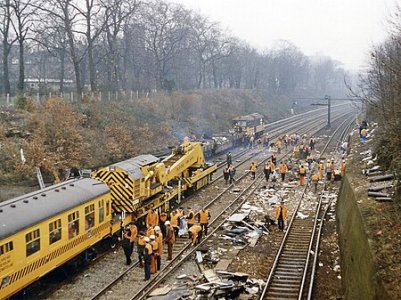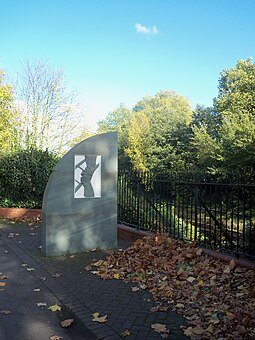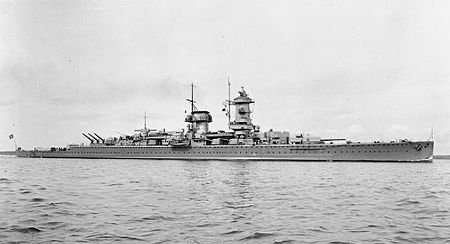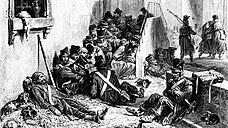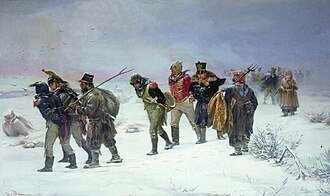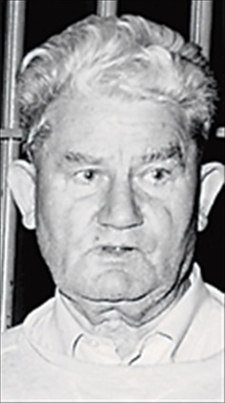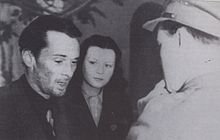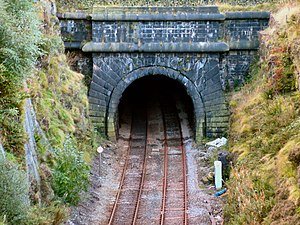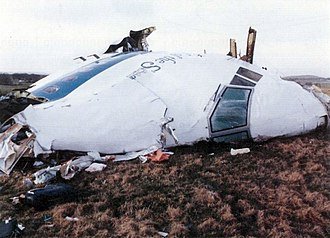20th December
1984 – The
Summit Tunnel fire, one of the largest transportation tunnel fires in history, burns after a
freight train carrying over one million liters of
gasoline derails near the town of
Todmorden, England, in the
Pennines.
View attachment 9089
The
Summit Tunnel fire occurred on 20 December 1984, when a
dangerous goods train caught fire while passing through the
Summit Tunnel on the railway line between
Littleborough and
Todmorden on the
Greater Manchester/
West Yorkshire border, England.
The train involved was the 01:40 freight train from
Haverton Hill,
Teesside to
Glazebrook oil distribution terminal near
Warrington. It was formed by
class 47 diesel locomotive 47 125 and thirteen
tankers.
At 05:50 on 20 December 1984, the train, carrying more than 1,000,000 litres of four-star
petrol in thirteen
tankers, entered the tunnel on the Yorkshire side traveling at 40 miles per hour. One-third of the way through the tunnel, a defective
axle bearing derailed the fourth tanker, which caused the derailment of those behind. Only the locomotive and the first three tankers remained on the rails. One of the derailed tankers fell on its side and began to leak petrol into the tunnel. Vapour from the leaking petrol was probably ignited by the
damaged axle box.
The three train crew members could see fire spreading through the
ballast beneath the other track in the tunnel, so they left the train and ran the remaining mile to the south portal, where they knew there was a direct
telephone connection to the signaller, to raise the alarm.
Crews from
Greater Manchester Fire Brigade and
West Yorkshire Fire Brigade quickly attended the scene. Co-ordination between the brigades appears to have worked well, perhaps because they had both participated in an emergency exercise in the tunnel a month before.
The train crew were persuaded to return to the train, where they uncoupled the three tankers still on the rails and used the locomotive to drive them out. Greater Manchester fire brigade then loaded firefighting equipment onto track trolleys and sent a crew with
breathing apparatus in to begin their firefighting operation at the south end of the train. They also lowered hose lines down one of the
ventilation shafts to provide a water supply. At the same time, crews from West Yorkshire fire brigade entered the tunnel and began fighting fires in the ballast at the north end of the train.
However, at 9.40 a.m., the pressure in one of the heated tankers rose high enough to open its pressure relief valves. The vented vapour caught fire and blew flames onto the tunnel wall. The wall deflected the flames both ways along the tunnel, and the bricks in the tunnel wall began to
spall and melt in the flames. The BA crews from both brigades decided to evacuate. They managed to leave just before the first explosion rocked the tunnel. The firefighters were saved because blast relief shafts 8 and 9 acted as flame vents, a function their designer never envisaged.
Left to itself, the fire burned as hot as it could. As the walls warmed up and the air temperature in the tunnel rose, all 10 tankers discharged petrol vapour from their pressure relief valves. Two tankers melted and discharged their remaining loads.
The fuel supply to the fire was so rich that some of the combustibles were unable to find oxygen inside the tunnel with which to burn; they were instead ejected from vent shafts 8 and 9 as fuel-rich gases that burst into flame when they encountered oxygen in the air outside. At the height of the fire, pillars of flame approximately 150 metres high rose from the shaft outlets on the hillside above.
The brigades continued to fight the fire for another two days, until West Yorkshire Fire Brigade issued the stop message just after 6:30 p.m. on Christmas Eve. Fire crews remained at the site until 7 January 1985

